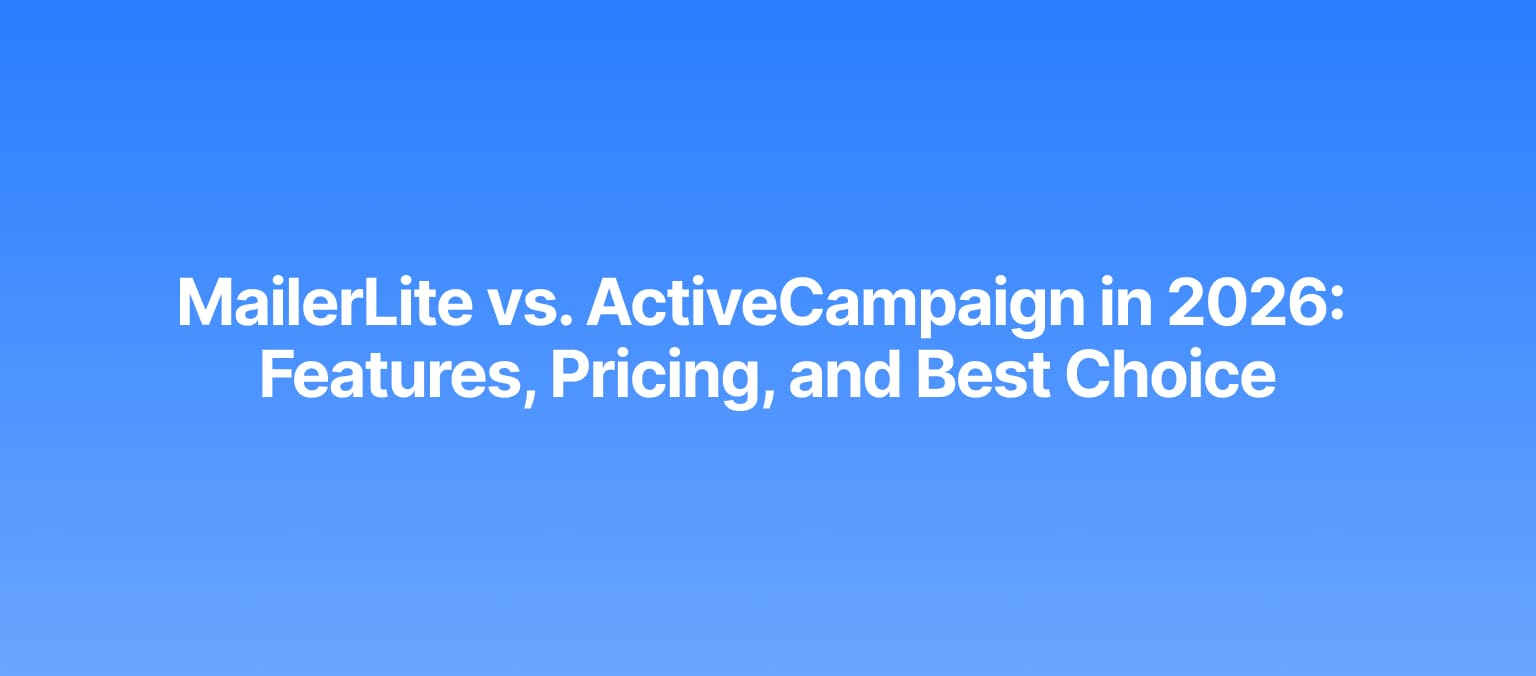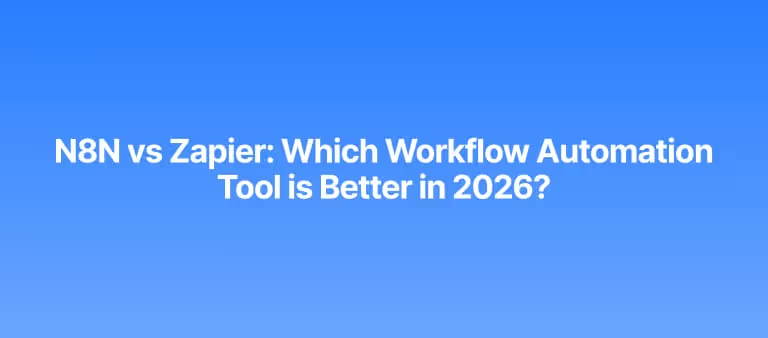If you struggle to generate replies from your cold emails, you’re not alone. A research study revealed that the reply rate for cold emails ranges from 1-5%. While cold emailing serves as a way to connect with potential customers, its challenges persist.
However, if you can crack the code, you get the advantages. A higher reply rate means better prospect engagement, yielding more opportunities to nurture leads and close deals. In this article, we will examine some cold email best practices for higher reply rates, citing our top experts’ contributions. Let’s get started.
Why cold emails don’t get replies
Cold email is one of the best sales channels you can add to your business, and getting a prospect to respond to a cold email isn’t always easy. In this section, we will explore some reasons why you don’t get replies from your cold emails.
1. Generic templates
A generic template shows you didn't make any effort. You didn’t address your prospect’s needs — just copy and paste or use AI to craft a random piece. It also signals that you send tons of identical emails to people and wait to see what pops up. Now, you may wonder. What does a generic template look like?
Here is a framework to help:
- Does it focus on the problem you solve?
- Does it include your current sales process or methodology?
- Does it focus on your brand and not the prospect?
- Does it mention the previously closed/lost deals relevant to the prospects?
If you can’t provide a confident yes to any of these questions, chances are the template is generic. Since business owners receive dozens of emails every single week, sending a generic message means your emails will probably get lost in their inbox. Why? It doesn’t stand out.
After all, the average cold email response rate is between 1% to 5% and most of those responses come from personalized emails, not generic ones.
2. No personalization
When your email isn’t personalized, it feels like you are not directly talking to your prospects. You don’t care about them or their needs. Besides, it fails to demonstrate the value that your business provides — proof that you’ve done your assignment and understand their situation.
The result? You may not earn their trust, ultimately affecting your relationship with potential customers.
3. Weak subject lines
Your subject line is the first impression of you or your brand. 47% of recipients open based on the subject line. It is like a channel to the rest of the email that determines whether they open your email or not.
When your cold email subject line doesn’t catch their attention, it becomes a turn-off for them. Weak subject lines can be inappropriate, generic, long, and not engaging. Anything longer than a few lines, you've lost it. Let them know you can help and get to the point.
4. Bad timing or frequency
Timing is not just important; it is everything. Bad timing means your prospects never get to see your email, or your email is no longer relevant. What works for one might not work for the others. You should do your research on your target customer’s behavior, location, and buying signals.
Let’s say a company raised new funds; sending a cold email one month after the funding round may not grant you the opportunity. That’s because the timeframe matters.
Also, take note of the nature of their job, industry segments, and typical work schedules of your recipients. This will help you determine the best and worst times for them to get an email from you. You might have the most irresistible offer, but when you send it at the wrong time, none of it matters.
According to Lemlist, the best time to send a cold email is between 8 a.m. to 12 p.m. During these times, people are typically at work.
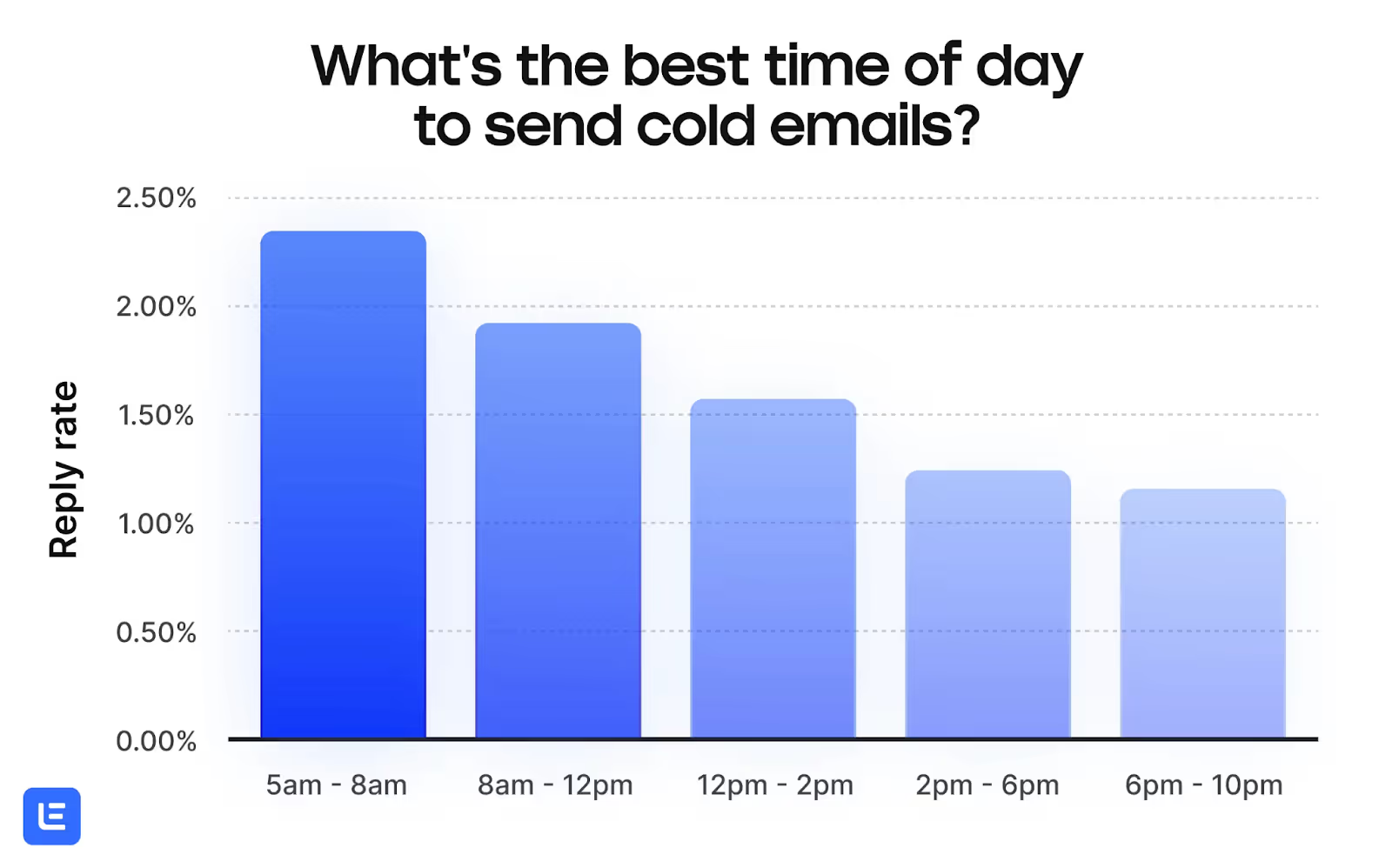
Source: Lemlist
With these cold email timing best practices, you would send an email when your recipients are more alert, and that increases the chance of them paying attention to your email. Wrong timing definitely means no replies.
5. Low deliverability
Besides your wrong timing, another common mistake why your cold emails don't get a reply is that they are not even delivered to your prospect’s inbox. Low deliverability arises due to different factors. One of them is no warmups. When you fail to warm up your domain or you blast about 60 emails from one email account, those cold emails would likely end up in the junk folder, not your prospect’s inbox.
Additionally, your email infrastructure is another critical factor. If you fail to properly configure DNS setup (SPF, DKIM, or DMARC), that could signal to the recipient’s server that your cold emails are illegitimate, harming your sender reputation and affecting deliverability. Once your emails don't get delivered to the inbox, you won’t get responses from your prospects.
Now that you know why cold emails don’t get replies, let’s look at how to avoid this issue. The next section covers some best practices to increase replies for your cold email campaigns.
Cold outreach email best practices to increase replies
Getting replies from cold emails isn’t an easy feat. However, we have implemented some practices for our clients that have worked. Here are some cold email best practices to increase replies.
1. Personalize beyond the first name
Personalization in cold emails helps you stand out in your prospects’ inboxes. But it’s more than just an attention-grabbing tactic by inserting their first name. True personalization extends to getting insights from pain points and specific needs based on real insights about the recipient. When it speaks directly to them, you stand a chance of getting a reply.
Soheil Saeidmehr, Head of Service Delivery at ColdIQ, provides some insights into cold email personalization best practices. He says, When done right, personalization is what makes your email relevant and helps build trust (especially in cold outbound). An example is when we targeted an AI startup right after they posted a LinkedIn update about hiring 10+ GTM reps. Instead of saying “I saw your post,” we built an email around what that hiring meant—that onboarding, rep enablement, and CRM hygiene would likely suffer unless systems were already in place.
In this scenario, they focused on the prospect’s problem/goal. This is the heart of personalization, using the language your prospects already use to describe their own problems. That’s what makes your message feel relevant, real, and helpful rather than spammy.
2. Nail your subject line
Your subject line is the first and sometimes only thing your prospect sees. A catchy subject line to get your prospect to open what they are about to read is another trick. You set realistic expectations on what they are about to read. Make it about them and be genuine.
When offering some insights on how to craft subject lines for cold emails, Michel Lieben, CEO and Founder at ColdIQ, says, “The preview text is your real subject line. The first line sells the open. Start with something relevant, specific, and different from the 20 other emails in their inbox that day.”
He also shared some cold email subject line best practices:
- Keep subject lines between 3-5 words max
- Use lowercase
- Make it relevant to their world, not yours.
In short, show them you understand them, and that will keep them reading. If it doesn’t spark curiosity, relevance, or urgency, your email won't get opened, no matter how good the content is. Keep it short, curiosity-driven, and relevant because effective subject lines boost open and response rates.
3. Write like a human, not a bot
To not sound like a robot is to add emotion into whatever you're writing. Just be human and write like a human being. You need to keep the tone light and remember that you are addressing another person. If you know who they are, you also know how they speak, and you need to speak the same.
A human-sounding message sounds conversational, making your prospect feel like you are talking to them. When your email sounds like a template, the reader zones out. Your message needs to feel like it's from someone they already know or someone who has put in the work to research them. No jargon, no filler. Be direct and helpful.
4. Use a clear call-to-action
A clear, singular call-to-action (CTA) is more effective than multiple, confusing ones. It should be direct and easy to understand. Don't ask for a demo or sell instead; make it clear what the next step is. Don't give them a chance to say no.
This is a practice to generate responses from them. Make it easy to say yes to, and they will. Be clear and specific in your approach.
5. Optimize send timing
Timing really matters in the grand scheme of things. What matters alongside it are nailing quantity, quality, and deliverability. Deliverability means you're landing in inboxes rather than spam folders.
This timing is niche-specific, and you have to do some A/B testing to determine what works for your prospect. Timing also depends on buying signals when a prospect shows an interest in your business’s products or services. If you can seize the right timing, your cold emails will likely get more responses.
6. Keep it short & skimmable
Your email is competing with dozens of others. It needs to grab attention and communicate value without taking up a lot of space. From Hunter's data set of 34 million emails, messages with 20–39 words see the highest average reply rate, around 4.5%, compared to only 3.7% for emails over 200 words.
Busy professionals skim through their inboxes in seconds. Long blocks of text get ignored, so keep your message short, clear, and formatted for mobile. This will improve the likelihood of a reply.
7. Follow up with value
Thoughtful follow-ups are also another important part of getting replies from your prospects. Sending them too early might seem pushy, and sending them too late negatively affects the results of a cold emailing campaign. The key goal is to find a balance.
Many responses come from follow-up emails. If you don’t get a reply initially, don’t hesitate to send a follow-up email. Persistence pays off. Some people will be too busy to reply, and they will simply forget about the email you sent them.
You just have to plan it out carefully so you don’t just overwhelm your prospects with meaningless emails and annoy them with frequent, spammy emails. Send thoughtful follow-ups, not nagging reminders.
8. Don't add links or attachments
Skip the extras for follow-ups. It's better to avoid links in the first email. If a lead has already responded, then you can send them emails with links or attachments, and it'll be fine, but if your lead has never responded to you, then make sure you only send them plain text emails.
9. Warm up your email domains
You begin to build your sending reputation by starting with 2–15 emails per day and slowly scaling. Sending cold emails from a brand-new domain or inbox without warming it up can immediately flag your messages as spam. A properly warmed-up inbox improves deliverability, and that means more replies.
Unwarmed emails destroy the sender's reputation. Your emails may be deleted before they are even opened, reducing the effectiveness of your outreach. Make sure you authenticate your email. Send to known individuals before scaling and increasing the sending volume gradually. Don't forget to conduct a test campaign to keep your sending in check.
10. Segment your audience
When you create detailed profiles of your ideal customers, known as buyer personas, to better understand their needs and preferences, you increase the likelihood of engagement with your brand and ultimately drive conversions.
After you have created effective buyer personas based on demographic data and market research, segment your email list accordingly. This allows you to send specific messages for each group within your audience based on their unique characteristics. By doing so, you increase the relevance of each message sent, which in turn improves open rates, click-through rates, and overall engagement with your company.
Want to know how ColdIQ applies these practices to generate high-performing outreach? Check out the next section.
ColdIQ’s approach to high-performing outreach
Want to know ColdIQ’s approach to high-performing outreach? Soheil Saeidmehr, Head of Service Delivery at ColdIQ, shared some helpful insights on how we achieve high-performing outreach for clients.
1. Research-driven personalization
ColdIQ’s approach to research-driven personalization starts with context before copy. Soheil says, “We don’t believe in volume for the sake of it. Our approach combines real-time signals (like hiring trends or tech adoption) with tailored messaging frameworks built around specific business use cases—onboarding, compliance workflows, or security gaps—not just generic pain points.”
When asked to share a success scenario of how this worked, Soheil explains, “We worked with a SaaS company targeting enterprises that use Okta. By identifying companies that had just restructured their IT teams, we positioned the client's offer as a backup and recovery failsafe in light of NIS2 regulation changes. The campaign outperformed benchmarks by 3X in reply rates and contributed directly to three closed deals in Q1.”
2. Dynamic templates
Dynamic templates aren’t just fill-in-the-blanks; we view them more as adaptive frameworks than templates here at ColdIQ. As Soheil Saeidmehr, Head of Service Delivery, opines, “We rely on modular outreach components that adjust based on signal type (like webinar attendance or hiring activity) and persona (RevOps, IT, Founder, etc.).
Our campaigns follow this framework:
- “Trigger → Pain → Value → CTA” sequence,
- Multi-touch cadences for email, LinkedIn, and calls
- Pre-built messaging variations for each outbound use case (compliance, support tickets, infrastructure, etc.)
And importantly, we don’t just hand these off. We train GTM Engineers and clients to adapt them using real campaign insights and not to copy and paste blindly.”
With this dynamic approach, we can scale personalization, stay relevant, and maximize replies that convert.
3. Deliverability optimization
We set the foundation for high-reply cold email campaigns by deeply optimizing deliverability before any message is sent. We configure custom domains with proper SPF, DKIM, and DMARC records to ensure high inbox placement. ColdIQ also warms up sending domains gradually, controls daily send limits (usually about 30 emails per inbox), and keeps bounce rates near zero by verifying every contact.
Their infrastructure avoids link tracking or attachments in initial emails and uses dedicated inboxes for each sender persona to avoid spam flags. This technical groundwork ensures that outreach lands in the inbox, giving campaigns the best shot at driving replies.
4. Systemized follow-ups
ColdIQ doesn’t treat follow-ups as an afterthought; we systemize them as a core part of the outreach strategy. Every campaign includes multi-touch follow-up sequences that are spaced intentionally over days or weeks and structured by persona and signal. These follow-ups reinforce value, address objections, and offer new angles to re-engage prospects. Our GTM Engineers build these into the campaign architecture using testing variations for optimal reply timing.
5. Tools for high-level personalization to generate replies
ColdIQ is renowned for one thing — using the right AI sales tools to get the job done. Soheil Saeidmehr, Head of Service Delivery, breaks down our stack for signal-based and high-context personalization:
- Clay – Pulls LinkedIn posts, job changes, hiring data, tech used, funding rounds, and employee count changes into a unified view
- Openmart – For sourcing niche accounts and B2C segments (e.g., restaurants by delivery tech used)
- Twain – Helps write emails with better tone, flow, or clarity before sending
- Instantly.ai – Manages our email infrastructure, warmup, and campaigns
Although we use a ton more, these are the most important ones.
6. Our outreach strategies across diverse business categories
Compared to other agencies, ColdIQ’s outreach strategies are unique. Soheil explains, “We never use a one-size-fits-all playbook. Our outreach changes based on the type of business, buyer persona, and urgency of the problem. Every campaign includes strategic copy testing, personal insights, and a feedback loop between GTMEs and the clients to drive iteration.”
With this approach, you can also achieve high-performing outreach strategies that will unlock your business’s growth. [placeholder for a comment]
Final words
Cold email best practices rely on implementing helpful tips to achieve a higher reply rate and drive more engagement. Use this checklist to ensure you’ve properly implemented all practices before hitting the send button.
Want higher reply rates without trial and error? Let ColdIQ build your outreach engine. Book a call with us today!


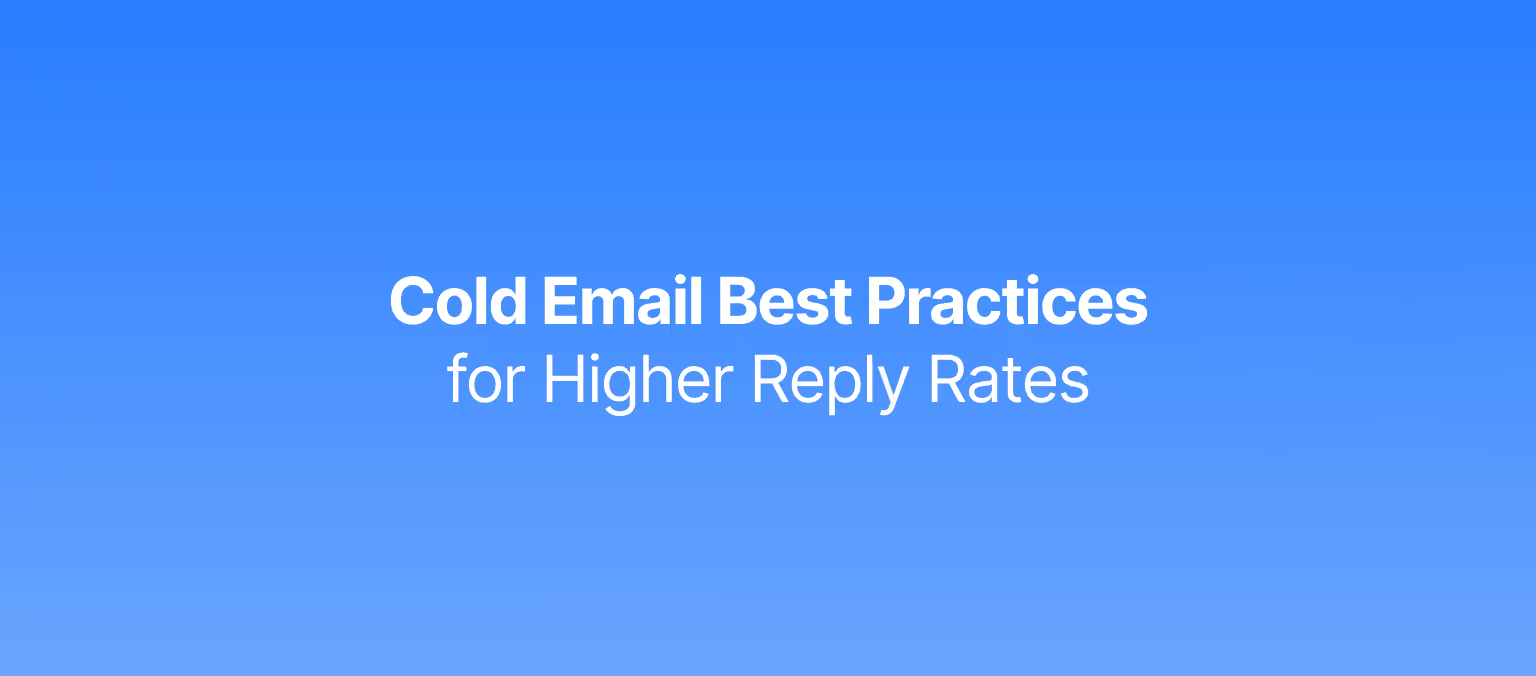

.avif)
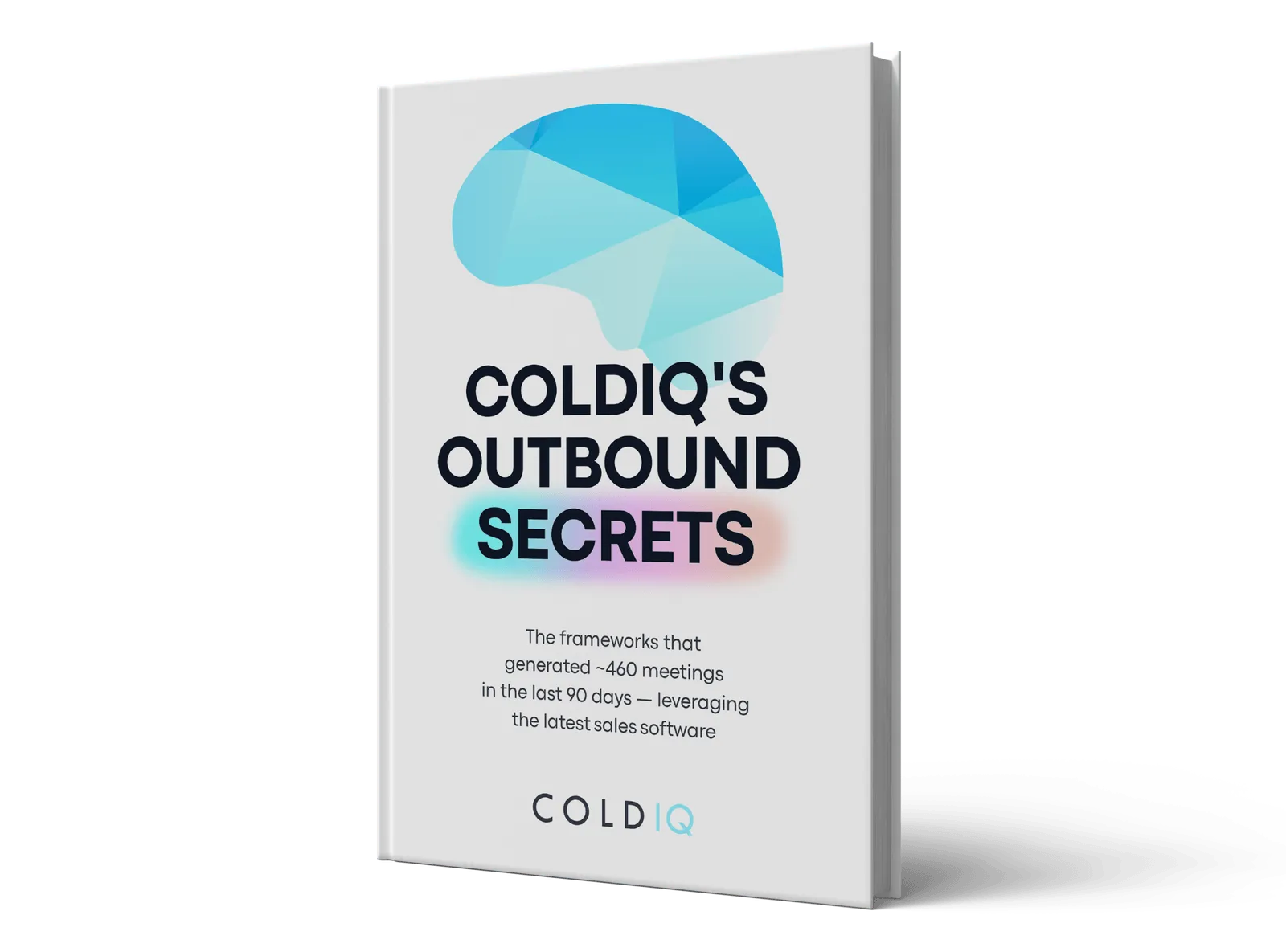
.svg)
.jpg)


